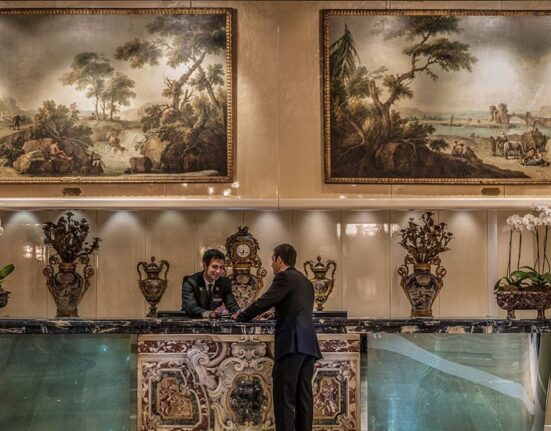The Metropolitan Museum of Art’s reinstallation of its European painting galleries is an almost gratuitous statement of global superiority. The New York museum keeps running up the score: overhauling its Greek and Roman galleries in 2007, the American wing two years later and the Islamic wing in 2011. The renovated Rockefeller wing, with its collection of African, ancient American and Oceanic art, reopens next year, and work is getting going on a new Modern and contemporary wing designed by the Mexican architect Frida Escobedo. All to compensate for what the Met perceives as problems that other museums might envy.
For its latest dazzler, the Met has refurbished and rehung 45 galleries with 700 paintings covering the five centuries from Giotto to Goya — numbers that don’t quite convey the overpowering magnificence they represent. Let’s imagine that, in the middle of a morning spent immersed in this colossal institution — perusing ancient jewellery, say, or Japanese scrolls or medieval sculpture or musical instruments — you suddenly got a hankering for a shot of Rembrandt. Just one of the new galleries (616) will supply a baker’s dozen. You like Goya? Here’s a chorus line of them arrayed against a wine-red wall. Vermeer? Voilà: a sizeable percentage of the world’s total supply.
That much was also true back in 2018, when the museum decided it was time to upgrade the galleries’ sooty, leaky skylights — all 30,000 sq ft of them. And once you’re spending $150mn on a big glass ceiling, you might as well rethink how to display what’s beneath it to maximum effect. Mission accomplished. The new skylights and illumination, the rich but subtle blues and greys on the walls and, most importantly, the sensitive and thoughtful installation make the sprawling collection look like an all-star line-up.
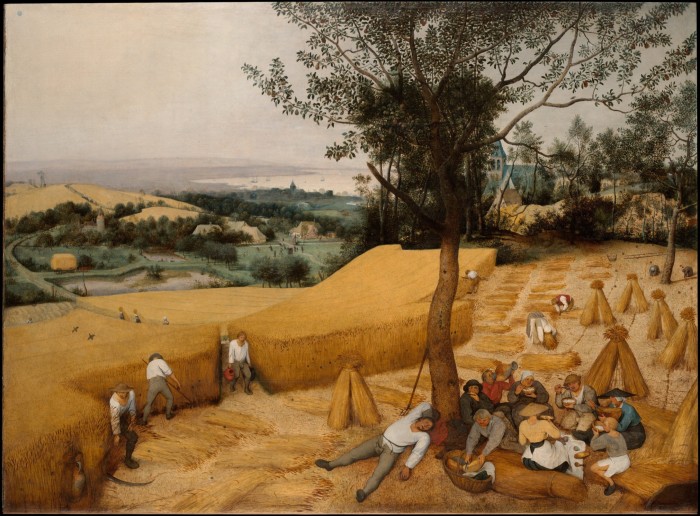
A journey through these gifts and wonders begins, appropriately, with Giotto’s freshly reconditioned “Adoration of the Magi”, a scene full of majesty, mystery and charm. The puzzled goats and convalescent mother add earthy counterpoint to the orchestra of angels up in their gilded heavens. Moving on through the centuries, viewers can inspect a familiar roster of heavy-hitters, such as Bruegel’s “The Harvesters” or Poussin’s restored “Abduction of the Sabine Women” — clean, luminous, newly alive.
In among the designated “collection highlights” are also innumerable rediscoveries. Fragonard, for instance, has regularly been brushed off as a confectioner of marzipan scenes. But then you come across his “A Shaded Avenue” (1775), where children and couples linger in the cool beneath a vault of foliage. You can feel the glare of sunlight at the edges of the frame, smell the damp earth, hear the breeze in the canopy. The effect of such physical intensity is virtually Proustian.
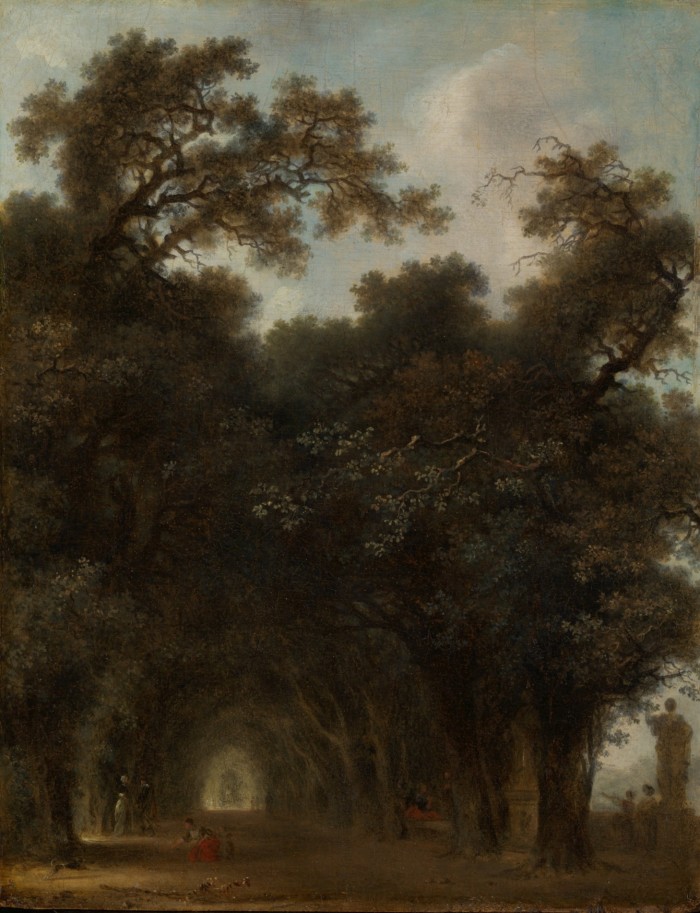
That painting sends you scurrying back to a similarly sensual grove painted by Rubens more than 100 years before: “A Forest at Dawn with a Deer Hunt”. The label points out that Rubens — not known primarily as a landscapist — painted this sort of scene “for his own pleasure in the final years of his life”. Even without being told, you might intuit it from the contrast between the serene, glowing wood and the spasm of quickness and thrash.
These riches will tempt you to wander through the galleries, darting after whatever colours and action catch your eye — a perfectly good way to absorb the Met’s abundance. But if you have the luxury of a whole day, a completist bent and comfortable shoes, you could also make your way through the galleries in numerical order, from 600 to 644. That tour leads ingeniously from century to century and theme to theme, weaving together chronology, history, geography and cross-generational influence so seamlessly that it makes a feat of virtuoso curation look easy.
A room of Renaissance portraits tracks the emergence of the human face as a subject of fascination in the mid-15th century and also lays out the distinctions between the Flemish approach on one wall and the Italian on the next. Venice keeps popping up as both subject and artistic incubator. First, we get the emergence of the city-state as a mercantile centre and a platform for Bellini. Dürer’s sojourn there smooths the transition to northern Europe and Lucas Cranach. When we return to the lagoon, the theme has switched to “Faith and Love” in the 16th century, with an ensemble cast featuring Titian, Lorenzo Lotto, Tintoretto and Veronese.
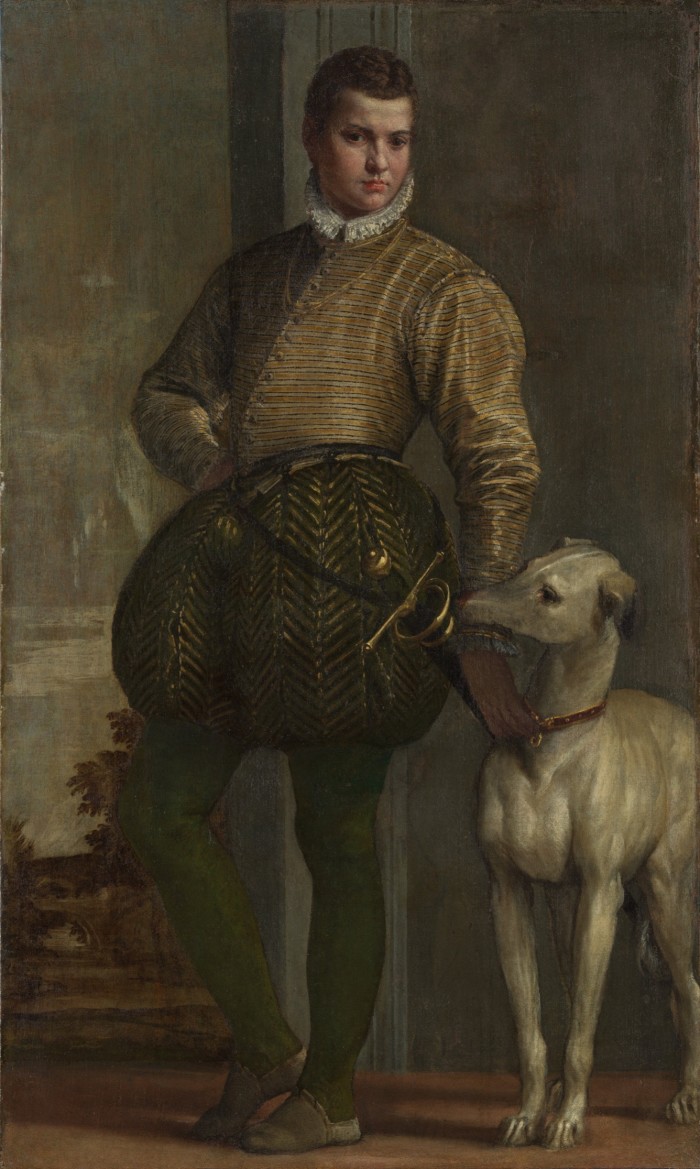
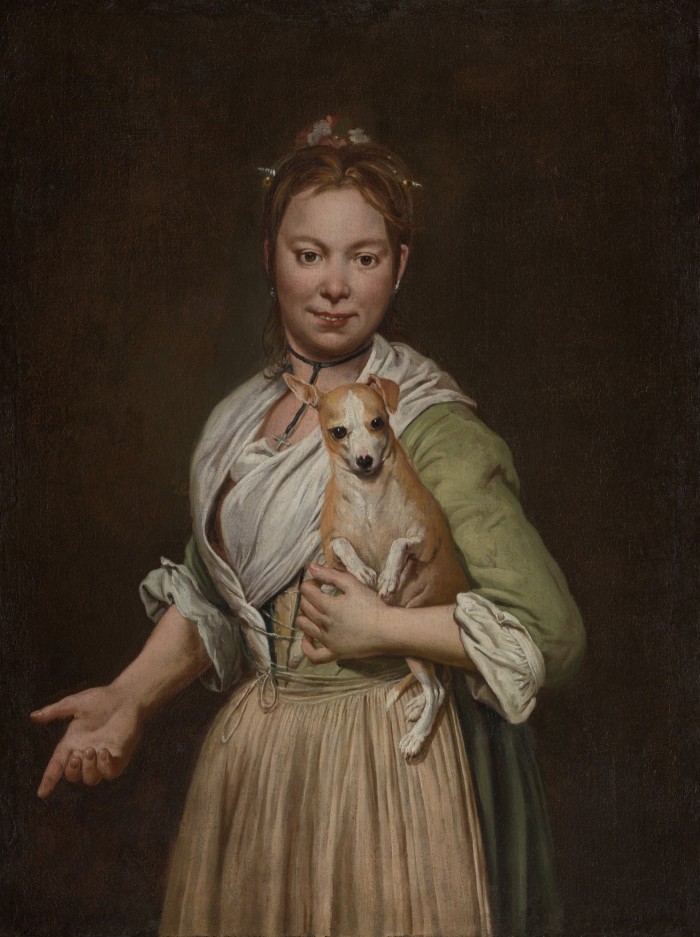
A further gallery of portraits yields another Veronese, the shockingly beautiful “Boy with a Greyhound” (1570s), dressed in green and gold. Both human and canine bodies are casually cocked and ready to spring. The painting’s harmonies echo in the mind, swelling when we come across Van Dyck’s self-possessed and fantastically elongated young Duke of Richmond and Lennox (1630s), tricked out with cherubic ringlets and an adoring greyhound of his own.
A similar music strikes up again in Giacomo Ceruti’s mesmerising 18th-century portrait of “A Woman with a Dog”. Sturdy and plebeian though she is, the woman wears the same colours as Veronese’s noble boy and strikes a similar pose. The Veronese youth’s wrist grazes a sword’s pommel, his fingers brushing the purebred’s collar; Ceruti’s maid cradles a ratty, flop-eared, slightly overfed pup in one muscular forearm. Even 200 years apart, the signs of social status peek out from every brushstroke.
I followed that particular set of blazes through the story of European painting; viewers will choose other markers and let their attention trace personal routes. The curators, led by Stephan Wolohojian, offer multiple readings without sacrificing cogent narrative. They have also taken care to reflect the once-invisible presence of non-white subjects and women painters while avoiding the tendentious or didactic rhetoric that often comes with the territory.
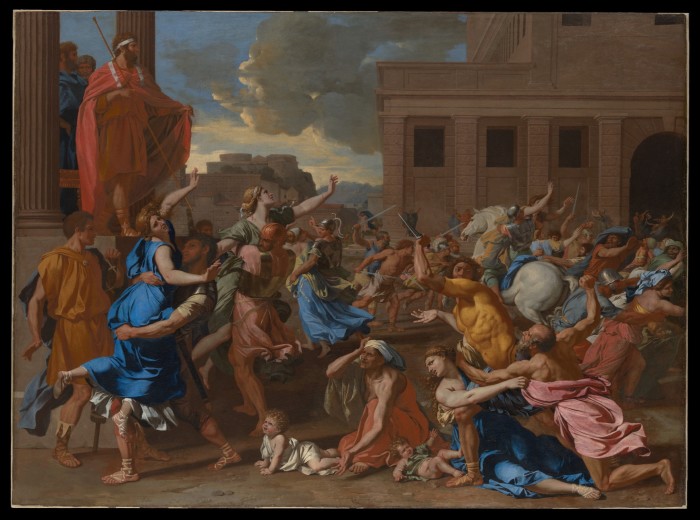
I was grateful to see William Wood’s 1792 portrait of the Bengali nursemaid Joanna de Silva — and for the straightforward, jargon-free text panel fusing historical context, implicit political commentary and connoisseurial confidence: “Painted at a time of rapidly expanding British colonialism, this is an exceptionally rare independent likeness of an identifiable Indian woman by an 18th-century English artist.” We get it: the East India Company’s minions saw those whose lives they ran as anonymous, interchangeable masses. Wood did not.
Painters, like musicians, merchants and missionaries, have often travelled widely, and it’s good to be reminded of those journeys in, say, the Italian-born Agostino Brunias’s view of the quayside linen market on the island of Dominica. A black servant holds a parasol to protect her mistress’s milky skin from the Caribbean sun. A fatigued-looking redcoat stumps by with a duffel bag under his arm. Vendors, slaves, shoppers and foremen of every hue mingle in a scene that might be more idealised than realistic but that crackles with enough theatrical energy to have pleased buyers back in Europe.
The curators occasionally make the point that art history does not march steadily from ism to reaction and on to the next innovation. Influence can be deferred, sometimes for generations. Revolutionaries look back as well as ahead. And so, for instance, a 14th-century Florentine Jesus with a look of horrified clairvoyance (attributed to Niccolò di Tommaso) segues into a trio of Francis Bacon self-portraits as artistic martyr. Niccolò and Bacon, two masters of suffering, might practically have been working side by side, 600 years apart.

Deliberate anachronism reaches its apotheosis in the room devoted to El Greco, who disappeared from view for centuries, until he was reclaimed as a proto-Modernist in the early 1900s. We get some startling juxtapositions: a miniature version of the Picasso-El Greco show that landed at the Kunstmuseum in Basel last year, plus a jolt of the electricity that Cézanne tried to channel from the master’s “View of Toledo” into his own hilly landscapes.
It’s easy to visit the Met regularly but also neglectfully, catching one temporary exhibition after another, constantly deferring a visit to the museum’s abiding heart. The new-old galleries combat that blasé attitude, reminding us that the permanent collection is like your family: just because it will be there waiting for us whenever we come back is no reason to take it for granted.
Follow FTWeekend on Instagram and X, and subscribe to our podcast Life and Art wherever you listen


